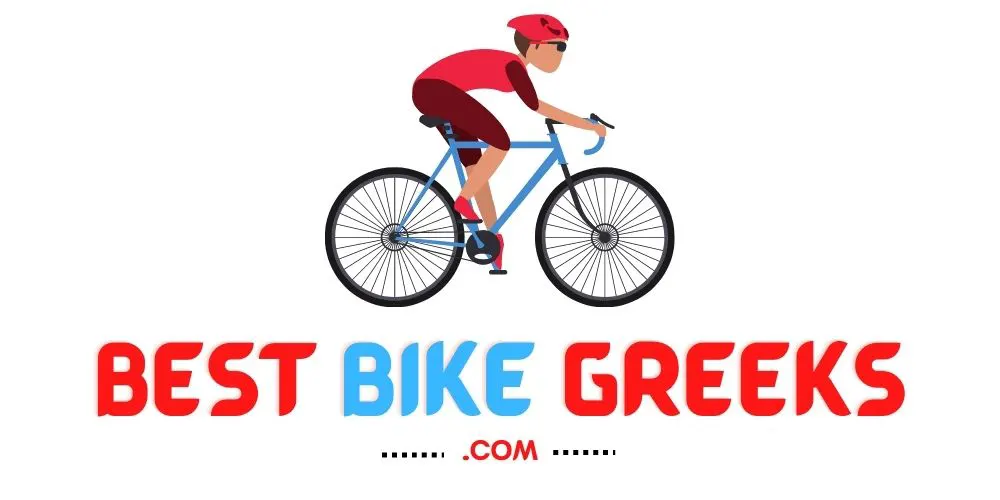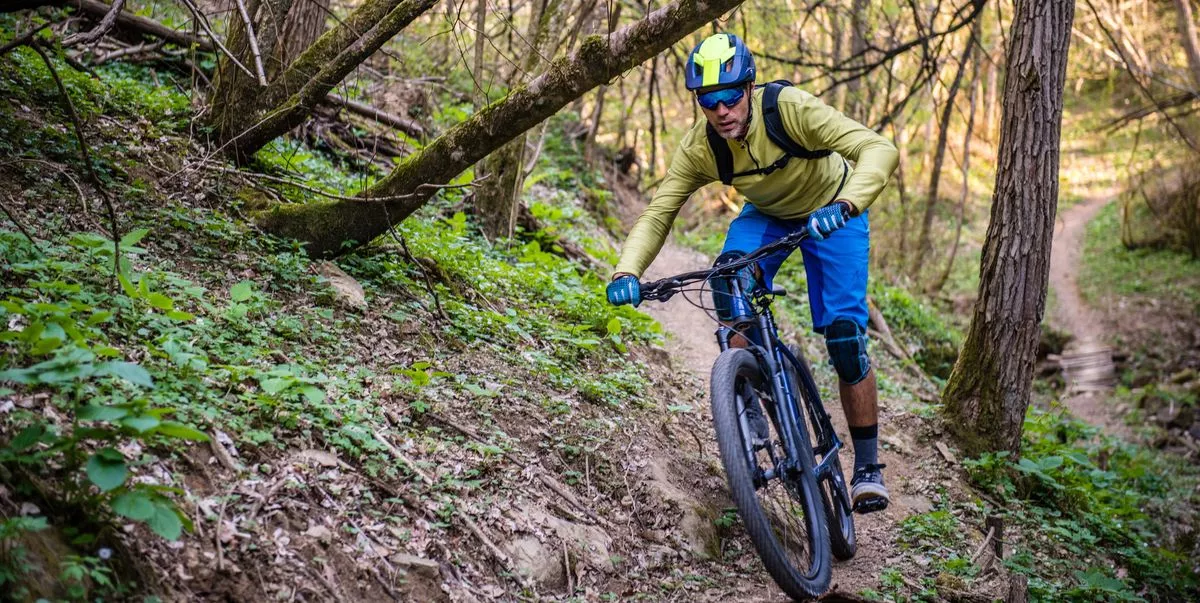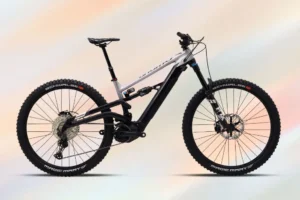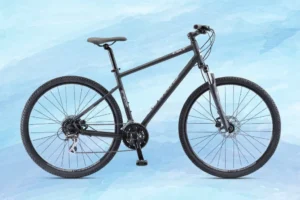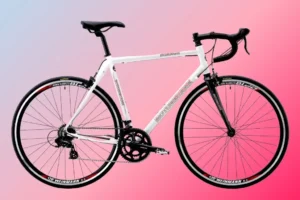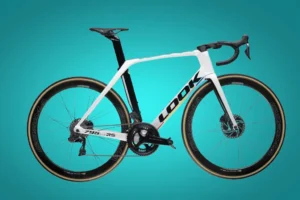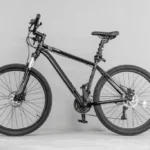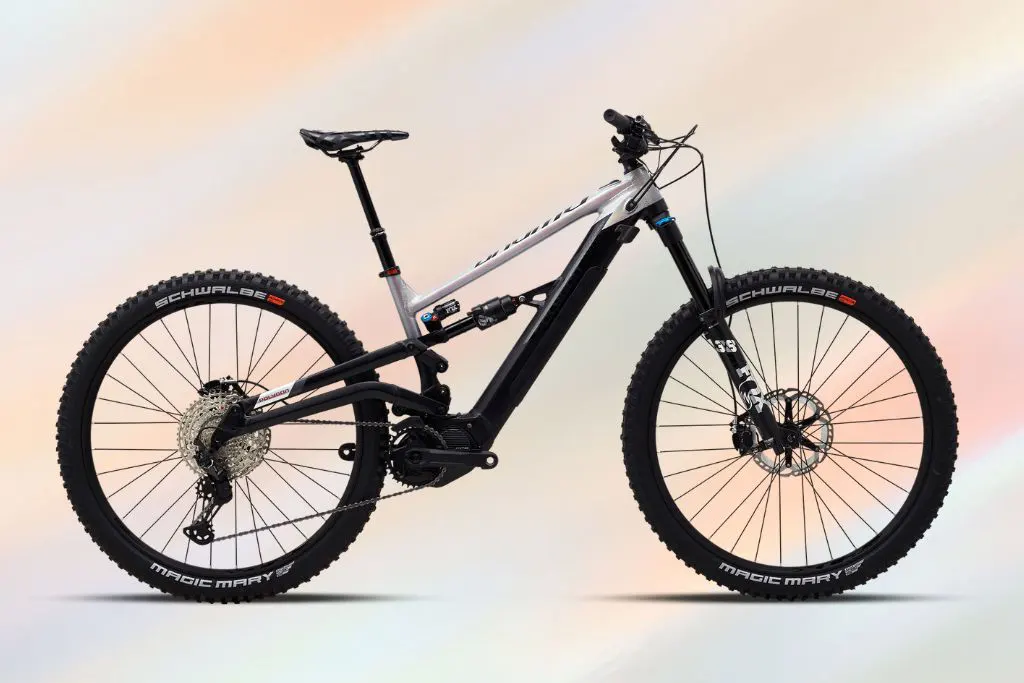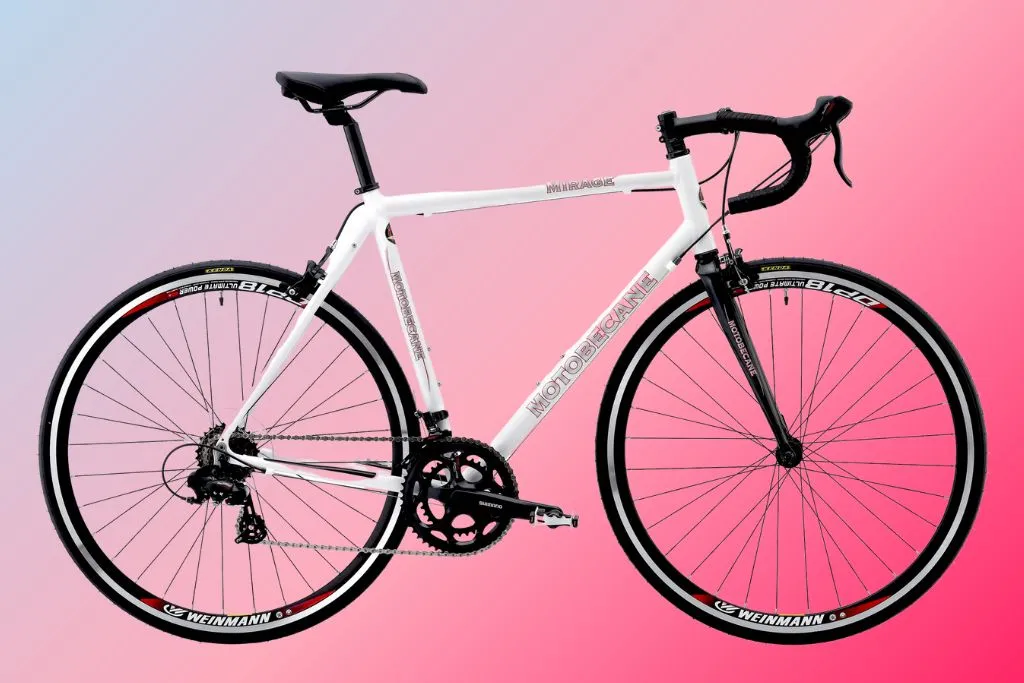Mountain biking is a fun and challenging sport, but how do you know which mountain bike is best for you? There are several key factors to consider as you choose your new mountain bike.
Suspension forks, as well as full–suspension bikes, have both benefits and downsides. Full suspension bikes offer improved grip on technical downhills and improved traction uphills but can be more difficult to control.
And if you still have confusion on How to choose the best mountain bike then this article is for you.
Suspension forks provide increased control on rough trails at the cost of less comfort and limited traction. If you’re unsure about how much or how little suspension you need, it may be best to test ride different bikes before making a purchase decision.
Main points to Know:
- What kind of suspension
- Wheel size
- How many gears
- How easy is it to pedal uphill
- How easy is it to maneuver on tight turns
- How much weight the bike can hold
- Frame material
What to consider before purchasing a mountain bike?
- Dual suspension mountain bike for intermediate trail riders trying to reach a new level without breaking the bank, 29-inch wheels with a small frame fits riders 63 to 67 inches tall
- Aluminum frame with internal cable routing provides lightweight durability and a streamlined look
- Free Floating Technology suspension is designed to limit brake jack and help absorb bumps in the trail for a more comfortable ride
- 12-speed trigger shifter offers smooth gear changes. Hydraulic disc brakes deliver superior stopping power
- 2.25-inch wide knobby mountain tires provide extra grip and stability
Price:
When it comes to mountain biking, price is always a consideration. You don’t want to break the bank, but you also don’t want to buy a bike that will only last a year or two. So, what should you consider before purchasing a mountain bike?
One thing to consider is your budget. How much are you willing to spend? Keep in mind that you will also need to purchase some gear, such as a helmet and pads, so your total cost may be higher than you expect.
Another thing to consider is the type of riding you plan to do. If you’re just starting out, it might be best to buy an entry-level bike. These bikes are typically less expensive than more advanced models, but they still offer quality performance.
Terrain/where you will be riding:
There is no doubt that mountain biking is an incredibly fun and exhilarating sport, however, it’s important to remember that the terrain where you will be riding should be taken into consideration before purchasing a mountain bike.
A bike that is perfect for one type of terrain may be completely unsuitable for another. For example, a cross-country bike is designed for riding on paved or unpaved roads, while a downhill bike is perfect for aggressive and steep terrain.
When considering what type of mountain bike to purchase, it’s important to think about the types of trails you’ll be riding on. If you’re mostly going to be riding on smooth single-track trails, then you don’t need a full-suspension bike with lots of gears.
Types of bikes:
When you are looking for a mountain bike, there are a few things you should consider before purchasing one. The first thing to consider is what type of riding you will be doing.
If you will be riding on trails, then you will want a mountain bike that is designed for that purpose. If you will only be using your bike for commuting, then you may want to consider a different type of bike.
The next thing to consider is your budget. Mountain bikes can range in price from several hundred dollars to several thousand dollars. If you are not sure how much you want to spend, it may be helpful to visit a few local bike shops and ask about their rental programs. This will give you a chance to try out different types of bikes before making a purchase.
Finally, don’t forget to think about the size and fit of the bike.
How to choose the best mountain bike for you?
Frame type:
Mountain biking is a great way to get outside and enjoy the outdoors. It can also be a great workout. When looking for a mountain bike, there are several things you need to consider. The frame type is one of the most important factors when choosing a bike.
There are three main types of mountain bike frames: hardtail, full suspension, and rigid. A hardtail frame has a front suspension fork, but no rear suspension. A full suspension frame has both front and rear suspension. A rigid frame does not have any suspension at all.
Each frame type has its own benefits and drawbacks. Hardtails are lighter and simpler than full suspension frames, and they’re less expensive. However, they can be more difficult to ride over rough terrain.
Wheel size:
When it comes to mountain biking, wheel size is a key component in finding the best bike for you. There are three sizes to choose from: 26″, 29″, and 650B. Each size has its own benefits and drawbacks that you should take into account before purchasing your next mountain bike.
26″ wheels are the most common size for mountain bikes and are good for beginner and intermediate riders. They provide a lot of stability and can travel over a variety of terrains easily. However, they’re not as fast or efficient as the other two sizes, so if you’re looking to cover more ground or get up to speed quickly, 29″ wheels may be a better option for you.
650B wheels are becoming more and more popular as they provide the best of both worlds: the stability of 26″ wheels coupled with the speed and efficiency of 29″ wheels.
Brakes:
When you are looking for a new mountain bike, it is important to know what the different types of brakes are and how they work. There are four main types of brakes: cantilever, V-brakes, disc, and hydraulic disc.
Cantilever brakes are the oldest type of brake and use two pads that pinch the rim on either side. They are found on touring bikes and older mountain bikes. V-brakes were introduced in the early 1990s as a replacement for cantilever brakes.
They use two arms with a V-shaped bracket on the end to press the two brake pads against the rim. Disc brakes were first used on downhill bikes in the late 1990s because they provide more stopping power than other types of brakes. They use a rotor attached to the hub of the wheel that spins with the wheel.
Gears:
There is no one “right” mountain bike for everyone. Different riders have different preferences and needs, so it’s important to choose a mountain bike that’s suited for your individual riding style. Here are a few tips for choosing the best mountain bike for you:
- Decide what type of riding you want to do. Do you want to ride cross-country? downhill? all-mountain? There are different bikes designed for each type of riding, so you’ll need to decide which type of riding you want to do the most before you can choose a bike.
- Consider your budget. Mountain bikes can range from $200 to $10,000 or more, so it’s important to set a budget before you start shopping.
- Think about your height and weight.
Wheel size is another important aspect to consider when choosing a mountain bike. Smaller-sized wheels are more agile, making them better suited to technical trails, but they can be less stable at high speeds. Larger diameter wheels are more stable at higher speeds but not as nimble on the trail.
If you’re unsure how much suspension or how big your tires should be, ask someone in the biking community for their opinion or test out different bikes before making a decision.
Gears allow riders to adjust how easy it is to pedal up and down hills by regulating how many times the pedals turn in relation to how quickly the wheels move underneath you.
Brakes that have large rotors will stop you more quickly than brakes with small rotors but are more difficult to control under wet conditions.
You may also consider how hard it is to pedal your bike up hills, how easy it is to maneuver on tight turns, how much weight your bike can hold, and what type of materials were used in your frame.
Also read: What are the things to look for in a bike before buying it
If you’re planning to ride downhill or do tricks, then a full-suspension mountain bike will likely be best for you. If you’re interested in riding uphill more often than downhill, then a flat handlebar should work well for you. However, if you don’t know how much suspension or how high quality your brakes need to be, ask someone who rides the same types of trails as you regularly before making a purchase decision.
Now that you have all of this information, how do you go about choosing the best mountain bike for your needs and budget?
There are several things you need to consider when purchasing a mountain bike. How much suspension do you want? What size wheels do you need? How many gears will you require? How easy is it to pedal uphill? How easy is it to maneuver on tight turns? How much weight can the bike hold? What frame material is best suited for your needs?
Which may be the perfect mountain bike for you?
Once you have answered these questions, you can then begin browsing for the perfect mountain bike for your needs and budget. There are plenty of choices available on the market, so how do you choose which one is best for you?
But if you ask me what is the best perfect mountain bike for beginners like me then my answer will be Schwinn Mesa Adult Mountain Bike Review.
A full-suspension bike with large wheels will probably be the best option if you ride downhill often or are interested in tricks. If not, a flat handlebar bike with smaller wheels may work better for you. However, if you don’t know how much suspension your bike needs or how high quality your brakes need to be, ask someone who rides regularly before making a purchase decision.
How do find that perfect mountain bike?
Once you have answered these questions, how do find that perfect mountain bike? There are plenty of options out there! You can begin browsing for the perfect mountain bike for your needs and budget.
Many cyclists who use mountain bikes for cross-country or all-terrain biking like how it gives them increased control over rough trails. However, these types of bikes are less comfortable and have limited traction on smooth trails. If you’re unsure how much suspension you need, ask someone in the cycling community or test out some different bikes before making a decision.
wheel size (how big the wheels are) how many gears (how easy it is to pedal up and down hills) how easy it is to maneuver on tight turns how much weight the bike can hold frame material
You can also read:
What is a Mountain Bike? The Difference Between Cycles
What is a road bike? What are the advantages and disadvantages of it?
If you don’t know how much suspension you want or how good your brakes should be, ask someone who rides regularly before choosing a bike.
Asking around is one way to determine how much suspension you want. Alternatively, test out different bikes before making a decision to see how they feel.
If you are interested in doing tricks or riding down hills often, then a full-suspension bike with large wheels might be best for you. If not, then a flat handlebar bike with smaller wheels may work better for you. Generally speaking though, if you don’t know how much suspension your bike needs or how good your brakes should be, ask someone who rides the same types of trails as you regularly before choosing one for yourself.
After answering all of these questions (and maybe asking around), how do find that perfect mountain bike? There are plenty of options out there! You can begin browsing for the perfect mountain bike.
Conclusion: How To Choose The Best Mountain Bike?
When choosing the best mountain bike, it is important to consider the different features that each one offers. Be sure to test ride a few bikes before making your final decision in order to figure out which one feels the best and fits your riding style. With the right mountain bike, you will be able to enjoy hours of fun and excitement on the trails.
